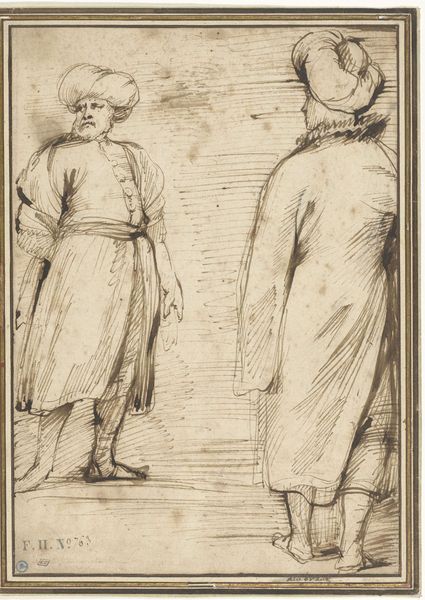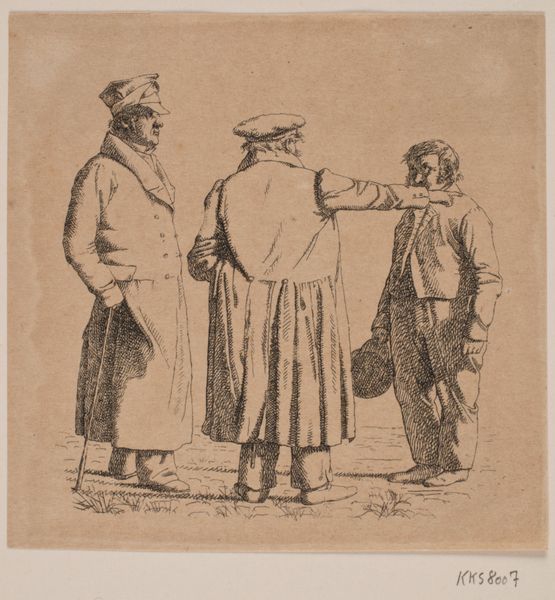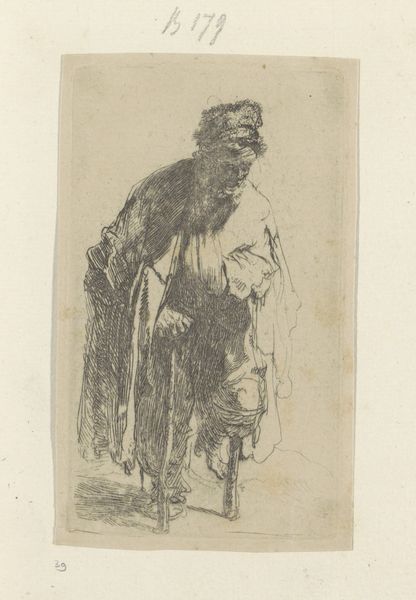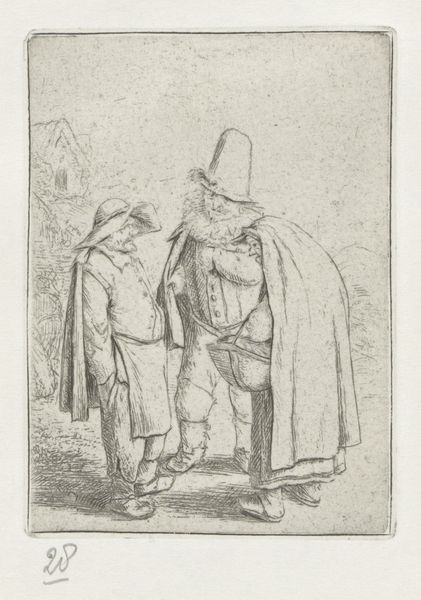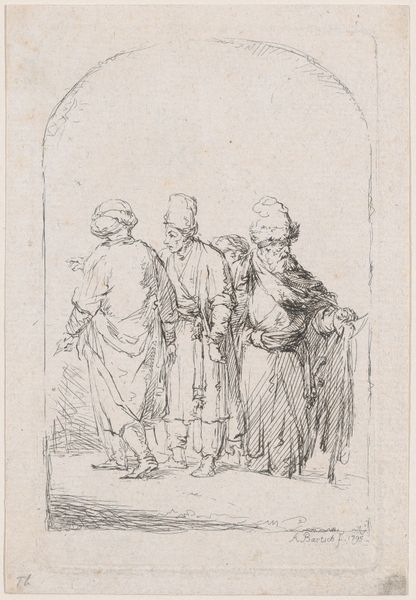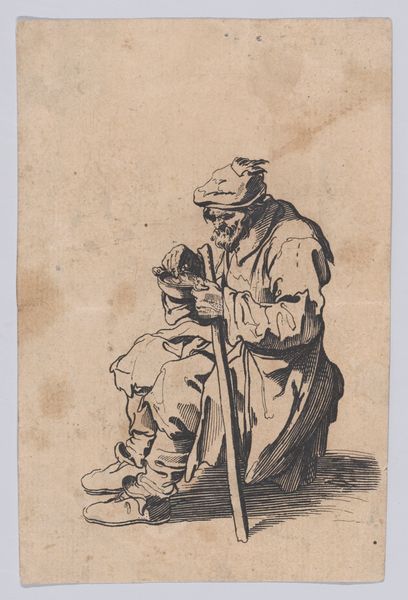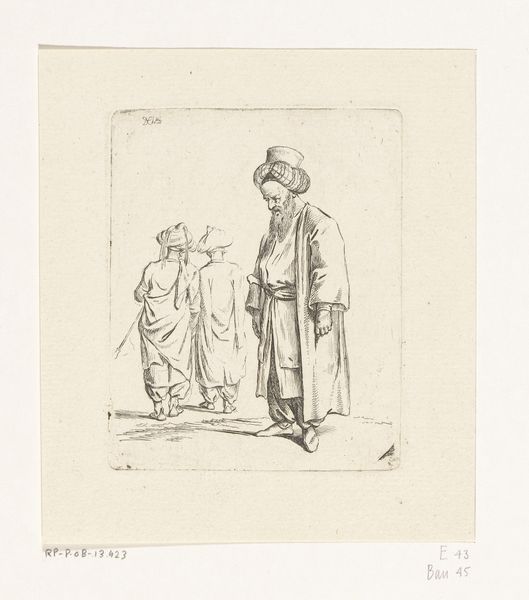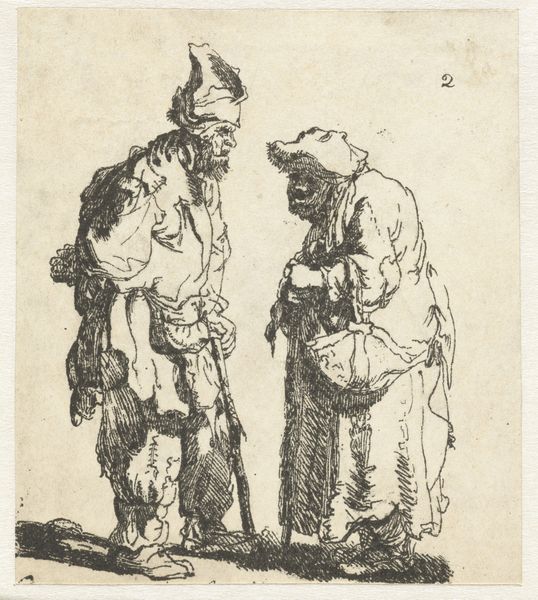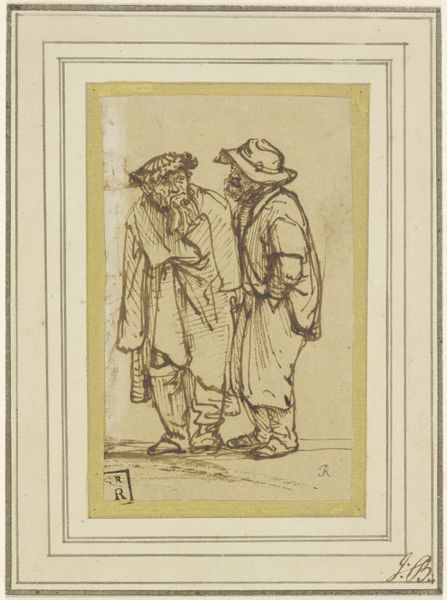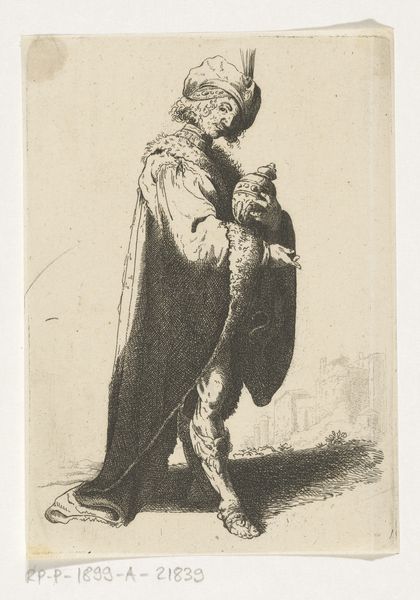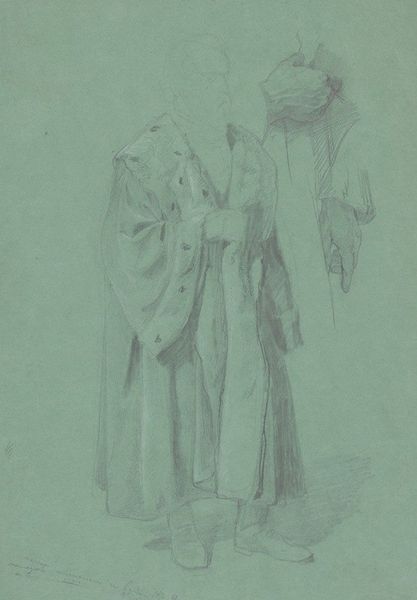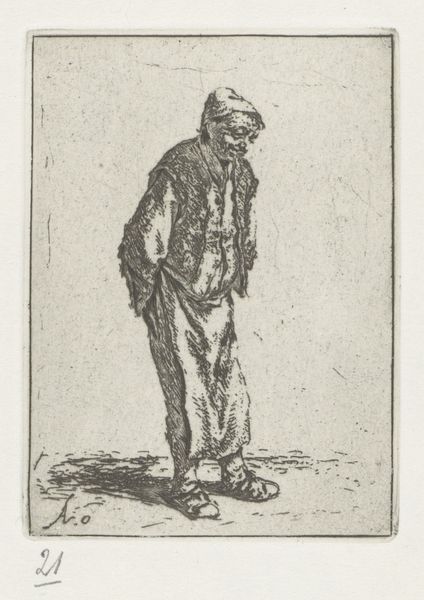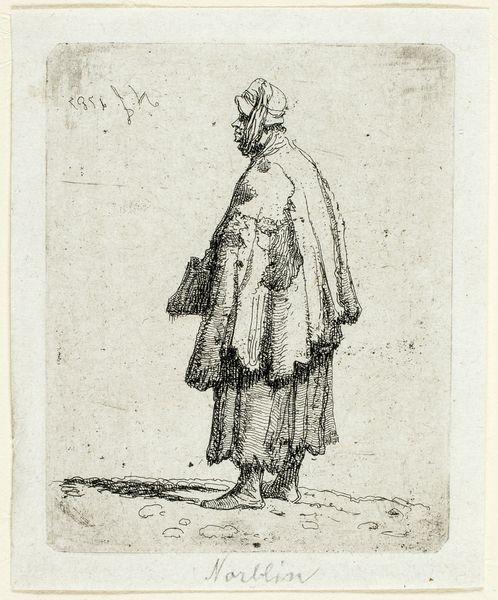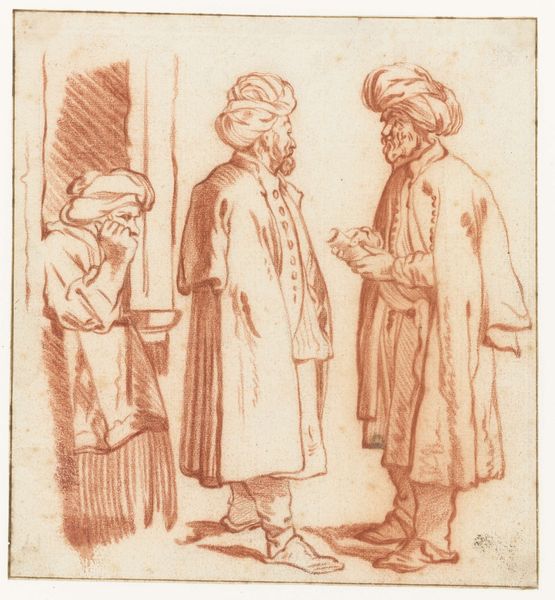
drawing, print
#
portrait
#
drawing
#
neoclacissism
# print
#
figuration
#
pencil drawing
Dimensions: Sheet: 2 15/16 × 2 1/8 in. (7.5 × 5.4 cm)
Copyright: Public Domain
Curator: Here we have Baron Dominique Vivant Denon's "Two Standing Figures," created around 1785. It's a pencil drawing, now residing here at the Metropolitan Museum of Art. Editor: My first impression is the austerity, they seem rooted to the spot almost mournful with such detailed attention paid to their clothing over any environmental background. The hatching and the medium seem at odds: the details want to give depth, but the flat application lends to flatness. Curator: Exactly. Denon's focus was not merely on depicting individuals but also on the politics of representation. During this Neoclassical period, there was a surge in depicting different people, particularly as Europe expanded its colonial reach. Editor: So you're saying this print speaks less to inherent value, and more as a record to understand labor forces. And how the material used, the print, enables accessibility and repeatability unlike a fine charcoal, let's say. I wonder if that contributes to the subjects becoming archetypes. Curator: Absolutely. Consider how prints circulated widely, contributing to a shared visual culture. Denon's work wasn't just art for art's sake. It was part of shaping public understanding, including notions of the ‘other’. He later became director of the Louvre museum. That position would afford even more of a voice. Editor: The contrast in fabrics and textures also draws me in. The almost felt-like layering of the figure in darker tones set against the flowing drape of what could be cotton or linen emphasizes different skilled practices, and arguably economic statuses or trade availability to both figures depicted. Curator: I think you’ve really picked up on some important points there. Denon wasn't simply recording appearances; he was capturing social dynamics. We have to see these drawings as part of larger colonial narratives that shaped how Europeans saw the world. Editor: It definitely pushes us to consider whose perspective truly matters in such documentation. Thanks for contextualizing all the different power relations and class relations. Curator: A pleasure, always enriching to see historical dialogues continue through art.
Comments
No comments
Be the first to comment and join the conversation on the ultimate creative platform.
